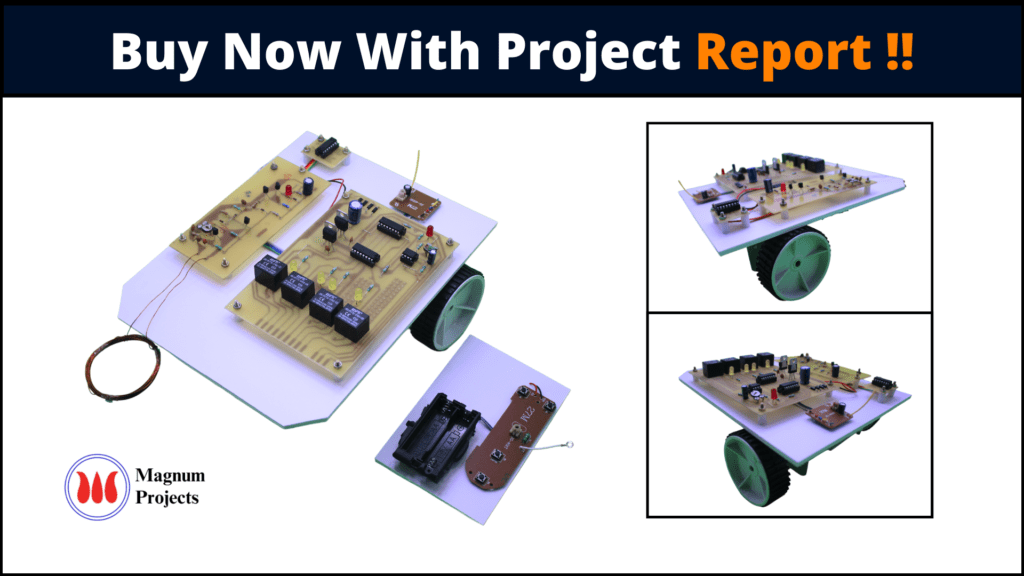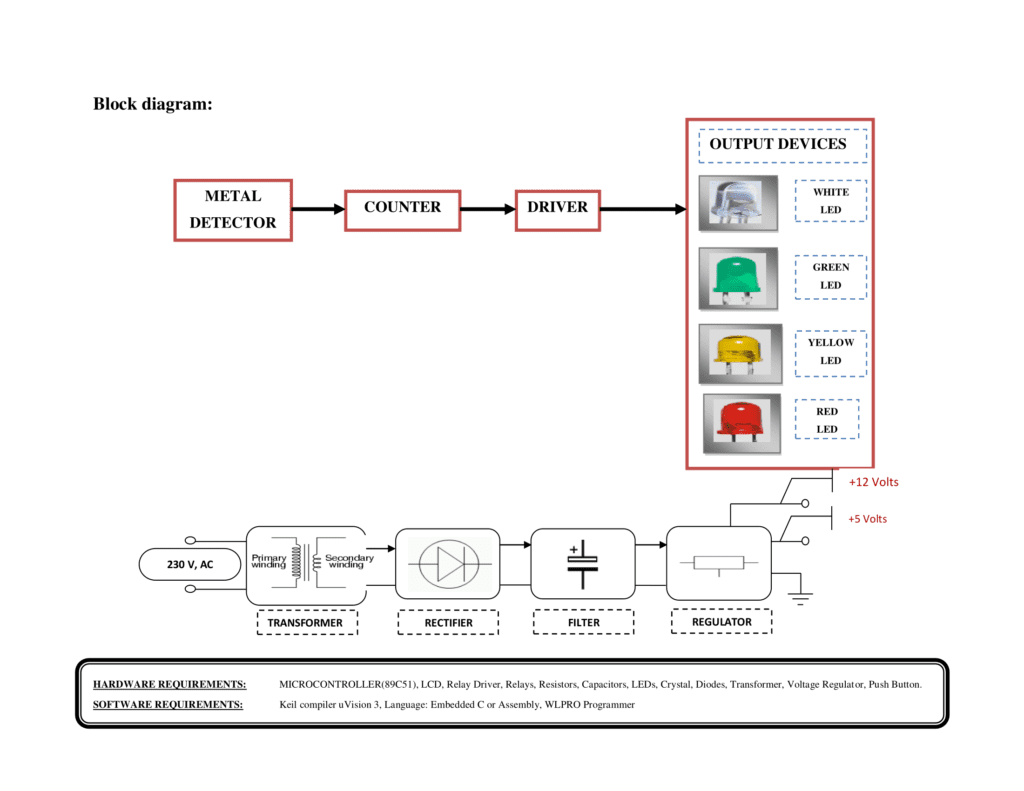Table of Contents:
Introduction:


The purpose of the Landmine detecting robot is to cover the maximum possible area, presentation of landmines and the leftover area on a visual map with accuracy in millimetres. This paper presents a prototype model of a land mine detecting robot that is powerful yet low cost, easily controllable, has the required accuracy and is equipped with a visual interface for landmine plotting, PID tuning and camera alignment. Emphasis is placed on the control of the differential drive robot in auto mode, semi-auto mode and manual mode. The image processing is used to find the accurate position of the robot which provides the live reckoning feedback to the dead reckoning servo control of the robot. Balance Beat metal detector is the sensor used to detect landmines. The use of a graphical user interface for the remote terminal computer to control the robot provides the user with a simple but powerful control. The overall aspiration of the system is to provide the user with a powerful, cost-effective and the same time intelligible to the average user.
The number of unexploded landmines in this world is huge and all too real. Unfortunately, nobody knows that number. Records about laying mines were lost or never kept. Identifying markers were removed. Survivors responsible for planting mines in war zones went home. Vegetation grew. Sands shifted. Governments and humanitarian organizations could only estimate the number of residual landmines as they attempted to determine the scope of the overall problem.
In mathematics, the square root of a negative number is called an imaginary number. In landmine statistics, the roots of the landmine numbers are often products of the imagination and educated guesses. It’s tricky to count buried objects you haven’t unearthed.


Block diagram explanation:
Power supply unit :
This section needs two voltages viz., +12 V & +5 V, as working voltages. Hence specially designed power supply is constructed to get regulated power supplies.
Metal detector:
A metal detector is an electronic instrument which detects the presence of metal nearby. Metal detectors are useful for finding metal inclusions hidden within objects, or metal objects buried underground. They often consist of a handheld unit with a sensor probe which can be swept over the ground or other objects. If the sensor comes near a piece of metal this is indicated by a changing tone in earphones, or a needle moving on an indicator. Usually, the device gives some indication of distance; the closer the metal is, the higher the tone in the earphone or the higher the needle goes. Another common type is stationary “walk-through” metal detectors used for security screening at access points in prisons, courthouses, and airports to detect concealed metal weapons on a person’s body.
Counter:
In digital logic and computing, a counter is a device which stores (and sometimes displays) the number of times a particular event or process has occurred, often in relationship to a clock signal.
Driver:
This section is used to drive the relay where the output is the complement of the input which is applied to the drive but the current will be amplified.
Leds:
A light-emitting diode (LED) is a two-lead semiconductor light source. It resembles a basic pn-junction diode, which emits light when activated.[7] When a fitting voltage is applied to the leads, electrons can recombine with electron holes within the device, releasing energy in the form of photons. This effect is called electroluminescence, and the colour of the light (corresponding to the energy of the photon) is determined by the energy band gap of the semiconductor.
Methodology:
The main aim of this project is to detect and count bombs in war fields and indicate that via glowing LEDs. Here the metal bomb detector will act as a bomb detector; it will detect the bomb. Based on the detection of the bomb it will activate the LEDS to indicate how many bombs have been detected. The counter is used to count the number of bombs detected and the driver is to drive the LEDS to indicate the detected bombs. The first time of bomb detection it will glow White LED, second Green LED, third Yellow LED and finally Red LED.
Advantages:
- Simple and hand efficient.
- Low power consumption
- Reduced manpower.
- Stylish design and eye-catching signage
- Unique service to customers.
Disadvantages:
- One-time investment cost.
Applications:
- Medical electronics/ devices
- Automation
- Test and measurement
- Building & home control Industrial applications such as manufacturing and material handling systems
- Airports, Museums and Shopping malls.
- Detection of colour marks or sorting tasks in the packaging, paper and printing industries.




